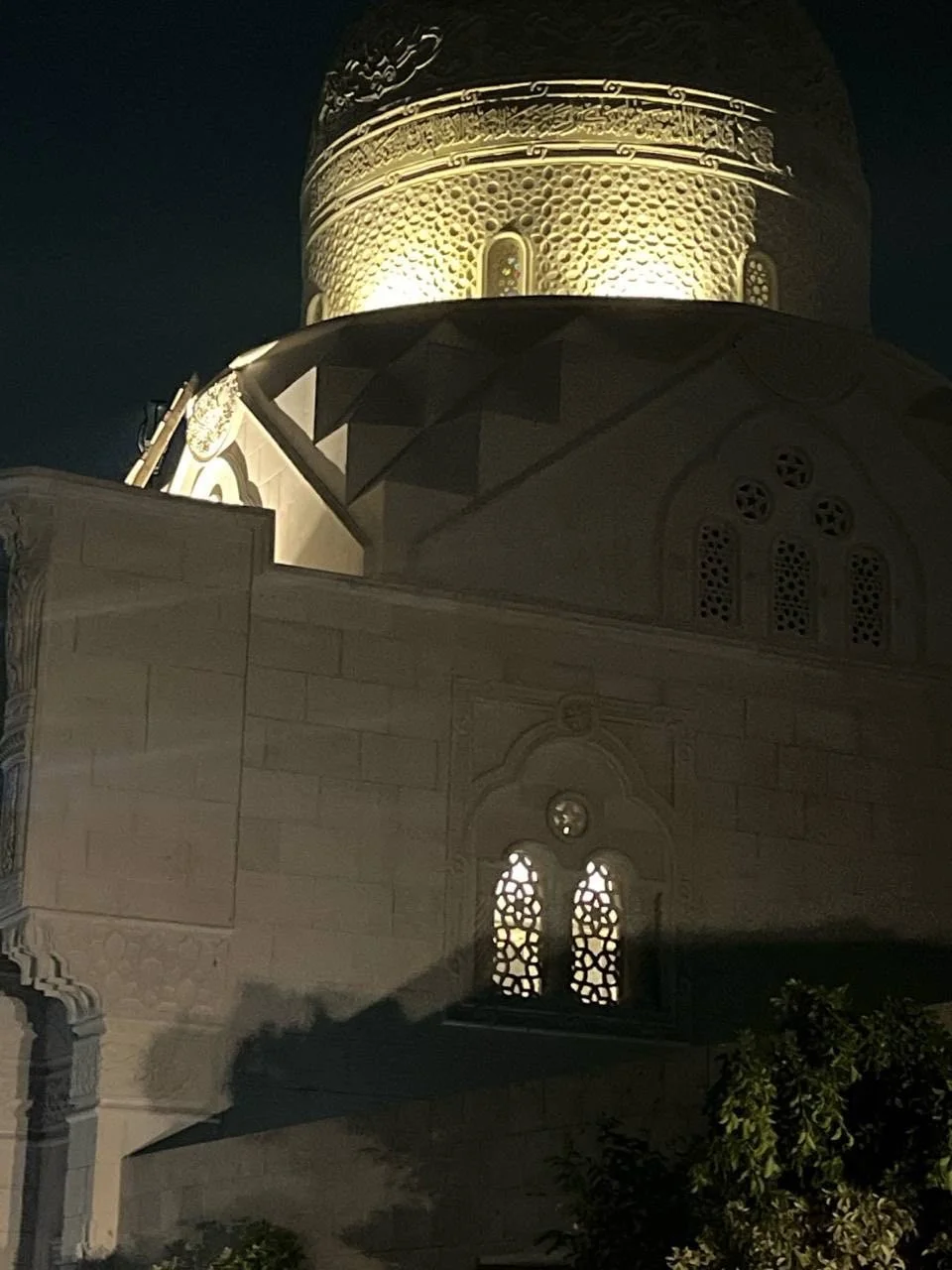The Dome and Mausoleum of Shaykh al-Islam al-Hafiz Abu al-Fadl Ibn Hajar al-Asqalani, Cairo Egypt
The project of constructing the Dome and Mausoleum of the renowned Islamic scholar Shaykh al-Islam al-Hafiz Abu al-Fadl Ibn Hajar al-Asqalani has been a monumental endeavour aimed at honouring the legacy of one of Islam's most influential figures.
With authorisation from and in coordination with the Ministry of Endowments, the Inarat Foundation for Revival and Renewal, Cairo, had the honour of funding, designing, and constructing this project. The collaboration was done in partnership with The Classical Institute, UK, under the auspices of its Founding Dean, Dr Badreldeen Ismail al-Husayni.
The architectural design of this project is deeply inspired by the late Mamluk period, a time of profound historical and cultural significance. The Mamluk era, spanning from the 13th to the 16th centuries, is renowned for its rich and ornate architectural style, which reached its zenith during the reign of the Mamluk Sultanate. This period is especially notable for its intricate decorative elements and grandiose structures, reflecting a sophisticated blend of artistry and engineering.
Shaykh Ibn Hajar al-Asqalani, a distinguished scholar of the Mamluk era, belongs to this illustrious period, and our design seeks to honour his legacy by emulating the architectural splendour of his time. The late Mamluk architecture is characterised by its elaborate geometric patterns, exquisite stucco work, and monumental arches, all of which are hallmarks of the era's aesthetic brilliance.
Incorporating these elements, we aim to create a space that not only pays tribute to the architectural grandeur of the late Mamluk period but also resonates with the scholarly and cultural contributions of Shaykh Ibn Hajar al-Asqalani. This approach not only reflects historical authenticity but also endeavours to inspire a sense of timeless beauty and reverence for the rich heritage of the Mamluk civilisation.
The project epitomises the values of tradition, innovation, growth and education. The meticulous craftsmanship pays tribute to the deep historical and cultural traditions of Islamic scholarship, as the construction of the dome and mausoleum mirrors the architectural and scholarly heritage associated with Shaykh Ibn Hajar al-Asqalani. While rooted in tradition, the project incorporates modern construction techniques and materials, ensuring the structure's durability and longevity, reflecting a progressive approach to preserving heritage.
The successful completion of this project signifies growth in the recognition and appreciation of Islamic cultural heritage and represents the collaborative efforts of organisations dedicated to such causes. Additionally, the mausoleum serves as an educational beacon, drawing scholars, students, and visitors interested in learning about Shaykh Ibn Hajar al-Asqalani and his contributions to Islamic scholarship, standing as a physical representation of the value of education in preserving cultural heritage.


